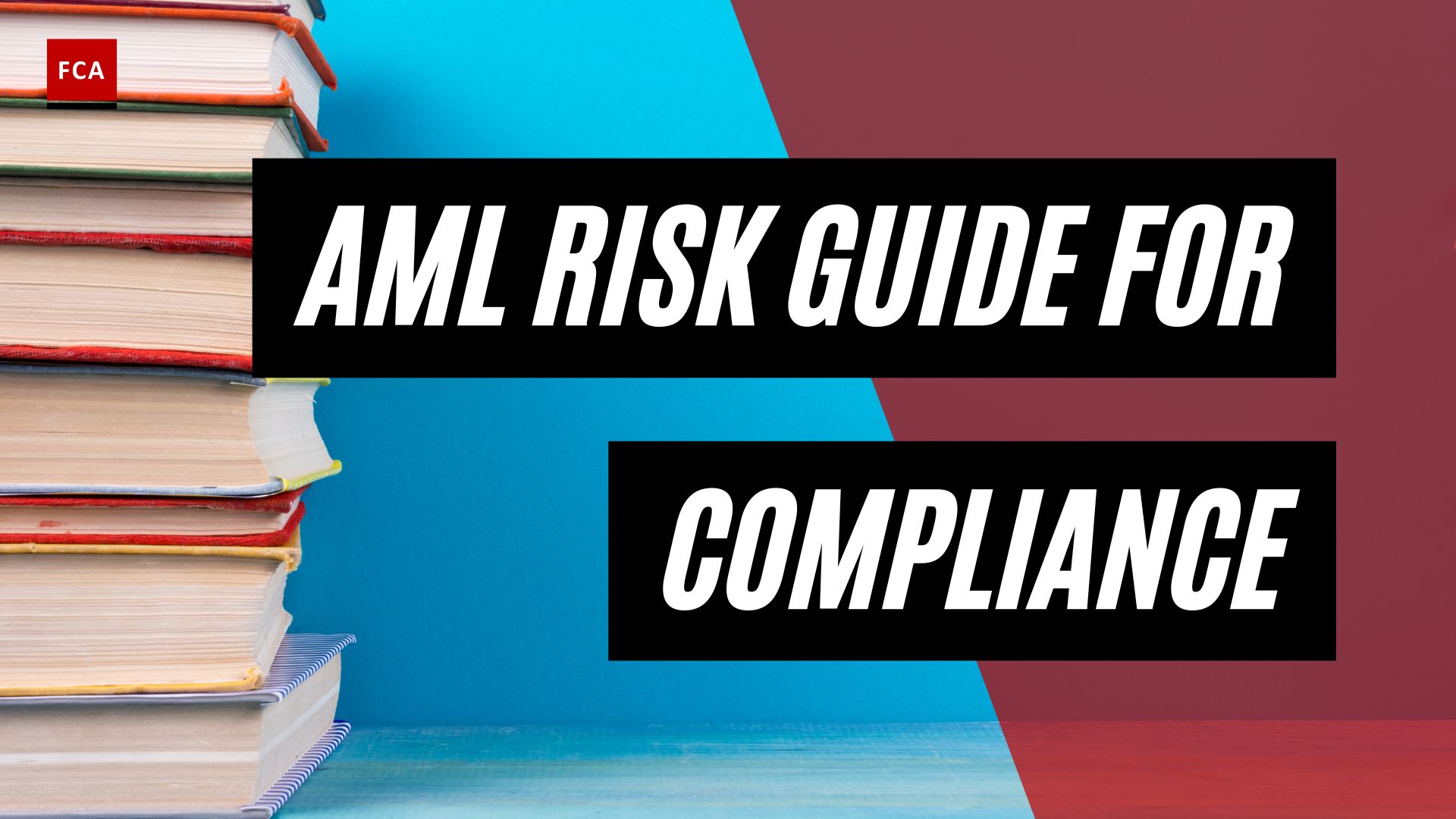Understanding AML Compliance Reviews
To effectively combat money laundering and terrorist financing, businesses and financial institutions must prioritize AML compliance. A key component of maintaining an effective AML program is conducting regular AML compliance reviews. These reviews play a crucial role in identifying areas of improvement, ensuring adherence to regulatory requirements, and mitigating financial crime risks.
Importance of AML Compliance Reviews
AML compliance reviews are essential in assessing an institution’s adherence to anti-money laundering regulations, policies, procedures, and controls. By conducting comprehensive reviews, organizations can identify gaps in compliance and areas that need improvement to mitigate financial crime risks. These reviews help to:
-
Ensure Regulatory Compliance: AML compliance reviews enable businesses to assess their level of compliance with applicable laws, regulations, and industry standards. By evaluating their adherence to AML requirements, organizations can identify and rectify any non-compliance issues, reducing the risk of fines and reputational damage.
-
Enhance AML Policies and Procedures: A thorough AML compliance review typically involves examining customer due diligence processes, transaction monitoring systems, suspicious activity reporting procedures, employee training programs, and overall risk management practices. By identifying any weaknesses or gaps in these areas, organizations can strengthen their AML policies and procedures to effectively mitigate money laundering and terrorist financing risks.
-
Mitigate Financial Crime Risks: AML compliance reviews help organizations proactively identify potential vulnerabilities in their systems and controls. By addressing these vulnerabilities, businesses can enhance their ability to detect and prevent illicit financial activities, reducing the risk of involvement in money laundering schemes or terrorist financing activities.
Components of an AML Compliance Review
During an AML compliance review, several components are typically assessed to ensure a comprehensive evaluation of an organization’s AML program. These components include:
-
Customer Due Diligence Processes: The review examines the effectiveness of the institution’s customer due diligence procedures in verifying customer identities, assessing customer risk profiles, and conducting ongoing monitoring to detect suspicious activities.
-
Transaction Monitoring Systems: The review assesses the effectiveness of transaction monitoring systems in identifying potentially suspicious transactions and ensuring timely reporting of suspicious activities.
-
Suspicious Activity Reporting Procedures: The review evaluates the institution’s processes for reporting suspicious activities to the appropriate regulatory authorities. It ensures that the reporting procedures are well-defined, followed consistently, and compliant with regulatory requirements.
-
Employee Training Programs: The review examines the training programs implemented by the institution to educate employees on AML policies, procedures, and regulatory requirements. It assesses the adequacy of training content, frequency of training sessions, and the effectiveness of training in promoting a culture of compliance.
-
Risk Management Practices: The review assesses the institution’s risk management practices related to AML compliance. This includes evaluating the effectiveness of risk assessments, risk mitigation strategies, and the establishment of internal controls to manage AML risks effectively.
By conducting a thorough evaluation of these components, organizations can gain insights into their AML program’s effectiveness and identify areas for improvement. Implementing the necessary enhancements based on the review findings will help strengthen the institution’s overall AML compliance framework.
AML compliance reviews are not only essential for regulatory compliance but also contribute to the overall integrity and security of the financial system. By conducting regular reviews and continuously improving their AML programs, businesses can effectively combat money laundering and terrorist financing activities, protecting both their institution and the global financial ecosystem.
Conducting an Effective AML Compliance Review
To ensure adherence to Anti-Money Laundering (AML) regulations, organizations must conduct thorough and effective AML compliance reviews. These reviews assess the effectiveness of the organization’s AML policies and procedures. Several key components should be included in an AML compliance review, including customer due diligence processes, transaction monitoring systems, suspicious activity reporting procedures, employee training programs, and risk management practices.
Customer Due Diligence Processes
Customer due diligence (CDD) is a critical component of AML compliance. During an AML compliance review, it is essential to evaluate the organization’s CDD processes. This includes the procedures for identifying and verifying customer identities, assessing customer risk levels, and conducting ongoing monitoring of customer transactions. Effective CDD processes help identify and mitigate the risk of money laundering and terrorist financing activities.
Transaction Monitoring Systems
Transaction monitoring systems play a crucial role in detecting suspicious activities and potential money laundering activities. During an AML compliance review, organizations should assess the effectiveness of their transaction monitoring systems. This includes evaluating the system’s capabilities to identify and flag transactions that deviate from normal patterns, exceed pre-determined thresholds, or involve high-risk individuals or entities.
Suspicious Activity Reporting Procedures
Prompt and accurate reporting of suspicious activities is vital for effective AML compliance. Organizations should have well-defined procedures in place for reporting suspicious activities to the appropriate regulatory authorities. During an AML compliance review, the organization’s suspicious activity reporting procedures should be assessed to ensure they are comprehensive, efficient, and in compliance with regulatory requirements.
Employee Training Programs
AML compliance is a collective effort that requires the active participation and understanding of all employees. Adequate training programs are essential to equip employees with the knowledge and skills necessary to identify and address potential money laundering risks. During an AML compliance review, organizations should evaluate the effectiveness of their employee training programs, ensuring that they cover relevant AML laws, regulations, and internal policies.
Risk Management Practices
An effective risk management framework is essential for mitigating money laundering and terrorist financing risks. Organizations should assess their risk management practices during an AML compliance review. This includes evaluating the organization’s risk assessment methodologies, risk identification and mitigation strategies, and ongoing monitoring of risks. By identifying and addressing potential risks, organizations can enhance their overall AML compliance program.
By thoroughly examining these components during an AML compliance review, organizations can identify gaps, weaknesses, and areas for improvement in their AML compliance program. This allows organizations to strengthen their AML policies and procedures, mitigate money laundering and terrorist financing risks, and ensure compliance with regulatory requirements. Regular AML compliance reviews are crucial to adapt to regulatory changes and maintain a robust and effective AML compliance program.
Benefits of Regular AML Compliance Reviews
Regular AML compliance reviews play a crucial role in ensuring organizations remain compliant with the ever-evolving regulatory landscape. By conducting periodic reviews, businesses can adapt to changes in AML laws and regulations, ensuring ongoing compliance. Let’s explore the key benefits of regular AML compliance reviews.
Adapting to Regulatory Changes
The regulatory environment surrounding AML compliance is dynamic, with laws and regulations frequently updated to address emerging risks and evolving financial crime trends. Regular AML compliance reviews enable organizations to stay abreast of these changes and make necessary updates to their AML compliance program. By keeping up with regulatory requirements, businesses can maintain a strong compliance posture and minimize the risk of non-compliance. To assist in the review process, organizations can utilize AML audit checklists and AML audit frameworks.
Strengthening AML Policies and Procedures
AML compliance reviews provide valuable insights into the effectiveness of an organization’s AML policies and procedures. By identifying gaps or weaknesses, businesses can take proactive measures to strengthen their AML program. This may involve updating policies, enhancing internal controls, or implementing additional risk mitigation measures. Regular reviews ensure that businesses have robust and up-to-date AML policies and procedures in place, reducing the risk of financial crime and protecting the organization’s reputation. AML audit requirements and AML audit procedures can guide organizations in conducting comprehensive reviews.
Mitigating Money Laundering and Terrorist Financing Risks
One of the primary objectives of AML compliance is to detect and prevent money laundering and terrorist financing activities. Regular AML compliance reviews help organizations identify vulnerabilities in their systems and processes, allowing them to implement appropriate measures to mitigate these risks. By analyzing customer due diligence processes, transaction monitoring systems, and suspicious activity reporting procedures, businesses can identify potential gaps and strengthen their defenses against financial crime. Additionally, conducting regular employee training programs ensures that staff members are equipped with the necessary knowledge and skills to detect and report suspicious activities. AML audit risk assessments can assist in identifying specific areas of risk that require attention.
By conducting regular AML compliance reviews, organizations can adapt to regulatory changes, strengthen their AML policies and procedures, and mitigate money laundering and terrorist financing risks. These benefits contribute to maintaining a strong and effective AML compliance program, safeguarding businesses from financial penalties, reputational damage, and other consequences associated with non-compliance.
Leveraging Technology for AML Compliance Reviews
In the ever-evolving landscape of anti-money laundering (AML) compliance, financial institutions are turning to advanced technologies to enhance the efficiency and effectiveness of AML compliance reviews. By leveraging these technologies, institutions can streamline processes, improve detection capabilities, and stay ahead of potential money laundering risks.
Advanced Technologies for Enhanced Efficiency
AML compliance officers are increasingly utilizing advanced technologies such as machine learning, natural language processing, and robotic process automation (RPA) to analyze large datasets for potential money laundering activities. These technologies aid in identifying suspicious transactions and flagging them for further investigation, significantly improving the efficiency of AML compliance reviews (Innovation Village).
Machine learning algorithms, for example, can be trained to identify patterns and anomalies in transaction data, helping to detect potentially fraudulent activities. Natural language processing algorithms can analyze unstructured data sources, such as customer emails or chat logs, to identify any indications of suspicious behavior. These advanced technologies enable financial institutions to process large volumes of data more quickly and accurately, reducing the burden on compliance teams.
Automation Tools for Streamlined Processes
Automation tools, including robotic process automation (RPA), are becoming increasingly prevalent in AML compliance reviews. RPA allows institutions to automate repetitive tasks such as data entry, transaction monitoring, and report generation. By leveraging automation, financial institutions can free up human resources to focus on more complex AML investigations and ensure a more thorough review of suspicious activities, thereby strengthening overall compliance efforts.
Automated systems can monitor transactions in real-time, flagging potential suspicious activities based on predefined rules and thresholds. This proactive approach helps financial institutions stay ahead of potential money laundering schemes and meet regulatory requirements more effectively. By automating routine tasks, institutions can reduce human error and ensure a consistent and thorough review of transactions.
Enhancing Detection Capabilities
The integration of technology in AML compliance reviews enhances the detection capabilities of financial institutions. Advanced analytics and AI-driven solutions allow institutions to create a risk profile for each customer and monitor their transactions against this profile. By doing so, institutions can detect unusual behavior or patterns that may indicate money laundering, streamlining the AML compliance review process and enhancing the effectiveness of monitoring efforts.
The use of artificial intelligence (AI) and machine learning enables financial institutions to continuously learn and adapt to evolving money laundering techniques. By analyzing vast amounts of data and identifying complex patterns, these technologies contribute to the early detection of suspicious activities.
By leveraging technology in AML compliance reviews, financial institutions can not only improve their detection capabilities but also enhance overall operational efficiency. These technological advancements enable institutions to stay compliant with regulatory requirements, reduce false positives, ensure faster transaction processing, and strengthen their defenses against money laundering and terrorist financing risks. It is crucial for institutions to embrace innovative solutions to combat money laundering effectively and maintain a robust AML compliance program.
Consequences of Non-Compliance with AML Regulations
Ensuring compliance with Anti-Money Laundering (AML) regulations is of utmost importance for financial institutions and businesses. Failure to comply with these regulations can have severe consequences, including financial penalties, reputational damage, and even potential criminal charges.
Financial Penalties and Reputational Damage
Non-compliance with AML regulations has led to significant financial penalties being imposed on financial institutions. In some cases, these fines have reached into the billions of dollars. For example, HSBC was fined $1.9 billion in 2012 for failing to prevent money laundering activities (Financial Crime Academy). These penalties can have a detrimental impact on the financial stability and profitability of organizations.
Furthermore, non-compliance can result in reputational damage. News of regulatory violations and money laundering scandals can erode customer trust and confidence. Once a reputation is tarnished, it can be challenging to regain the trust of clients and stakeholders. The loss of trust and the negative publicity can lead to a decline in business opportunities and customer loyalty.
Loss of Business and Customer Trust
Non-compliance with AML regulations can result in the loss of business opportunities. Financial institutions that fail to meet the necessary compliance standards may face restrictions in operating in certain jurisdictions or be subject to regulatory sanctions. This limited ability to operate can have a direct impact on revenue generation and growth potential.
Customer trust is essential in the financial industry. AML regulations are designed to protect customers from illicit activities and promote the integrity of the financial system. When organizations fail to comply with these regulations, it can undermine the trust that customers place in them. Customers may choose to take their business elsewhere, seeking out institutions with stronger AML compliance measures in place.
Potential Criminal Charges
In addition to financial penalties and reputational damage, non-compliance with AML regulations can also lead to potential criminal charges. The severity of punishment varies depending on the jurisdiction and the extent of money laundering involved. In Sweden, for example, operators can face heavy fines, and in severe cases, individuals within a company can be sentenced to pay fines or even endure imprisonment for breaching AML regulations (Pliance). Perpetrators of the most serious types of money laundering can face up to six years in prison.
To avoid these severe consequences, organizations must prioritize AML compliance and establish robust systems and procedures to detect, prevent, and report suspicious activities. By doing so, they can protect themselves from financial penalties, reputational damage, and potential criminal charges, while also contributing to the integrity and stability of the global financial system.
Key Elements of an Effective AML Compliance Program
To ensure adherence to anti-money laundering (AML) regulations and mitigate the risks associated with financial crimes, a robust AML compliance program should encompass several key elements. These elements work together to create a comprehensive framework for identifying, assessing, monitoring, and managing potential money laundering and terrorist financing activities. The key elements of an effective AML compliance program include:
Risk Assessment
A thorough risk assessment is the foundation of an effective AML compliance program. It involves analyzing the inherent risks faced by the institution, such as the types of customers, products, services, and geographic locations involved. By understanding these risks, financial institutions can tailor their AML controls and monitoring efforts to mitigate the specific vulnerabilities they face. A regular AML compliance review helps identify any changes in risk profiles and ensures the ongoing accuracy of customer data held by the institution.
Customer Due Diligence
Customer due diligence (CDD) is a critical component of an AML compliance program. It involves verifying the identity of customers, assessing their potential risk, and understanding the nature and purpose of their transactions. Robust CDD procedures help financial institutions establish a clear understanding of their customers and detect any unusual or suspicious activities. Ongoing monitoring of customer behavior is crucial to identify any changes that may indicate potential money laundering or terrorist financing risks.
Transaction Monitoring
Transaction monitoring plays a vital role in detecting suspicious activities that may indicate money laundering or terrorist financing. Through the use of advanced analytics and AI-driven solutions, financial institutions can create a risk profile for each customer and monitor their transactions against this profile. This method helps in detecting unusual behavior or patterns, streamlining the AML compliance review process, and enhancing the effectiveness of monitoring efforts.
Reporting and Record-Keeping
Accurate and timely reporting of suspicious activities is a key requirement for AML compliance. Financial institutions must establish robust systems and procedures for reporting any suspicious transactions to the relevant authorities. Additionally, comprehensive record-keeping is essential to ensure auditability and facilitate investigations when necessary. Proper documentation of AML compliance reviews and actions taken is crucial for demonstrating compliance to regulators.
Training and Education
A well-trained and knowledgeable workforce is essential for maintaining an effective AML compliance program. Regular training programs should be provided to employees, ensuring they are aware of the latest AML regulations, emerging risks, and the institution’s internal policies and procedures. Training should cover topics such as recognizing suspicious activities, customer profiling, and reporting obligations. Ongoing education helps employees stay up to date with evolving AML practices and enhances their ability to detect and prevent financial crimes.
By incorporating these key elements into their AML compliance programs, financial institutions can establish a strong framework for combating money laundering and terrorist financing. Regular AML compliance reviews ensure the continued effectiveness of these elements and enable institutions to adapt to regulatory changes and emerging risks, thus strengthening their overall compliance efforts.
AML Compliance Reviews: Frequency and Best Practices
To ensure compliance with Anti-Money Laundering (AML) regulations and mitigate the risks associated with financial crime, conducting AML compliance reviews is crucial. These reviews assess the effectiveness of an organization’s AML program and identify any gaps or weaknesses that need to be addressed. In this section, we will explore the recommended frequency for AML compliance reviews, the benefits of conducting regular reviews, and the importance of tailoring the frequency to an organization’s risk appetite and jurisdiction.
Recommended Frequency for AML Compliance Reviews
AML compliance reviews should be conducted at least annually to ensure ongoing compliance with regulations and to mitigate the risks associated with financial crime (Northrow). Regular reviews are essential to identify any changes in customer behavior, update customer risk profiles, and ensure the ongoing accuracy of customer data held by the institution (Northrow).
However, it is important to note that the frequency of AML compliance reviews can vary depending on various factors, including the institution’s risk appetite, the complexity of its customer base, and the nature of the products and services it offers. High-risk institutions or those operating in jurisdictions with higher financial crime risks may need to conduct AML compliance reviews more frequently than annually to effectively mitigate these risks (Northrow).
Benefits of Regular AML Reviews
Regular AML compliance reviews offer several benefits to organizations. Firstly, they help businesses adapt to the ever-evolving regulatory landscape by ensuring compliance with the latest AML laws and regulations. By conducting periodic reviews, organizations can identify any regulatory changes and implement necessary updates to their AML compliance program.
Secondly, regular AML compliance reviews enable organizations to strengthen their AML policies and procedures. These reviews provide insights into any gaps or weaknesses in the existing program, allowing businesses to make necessary adjustments and enhancements. By continuously improving their AML compliance program, organizations can effectively mitigate money laundering and terrorist financing risks.
Tailoring Frequency to Risk Appetite and Jurisdiction
While conducting AML compliance reviews at least annually is recommended, organizations should tailor the frequency of reviews to their specific risk appetite and jurisdiction. High-risk institutions or those operating in jurisdictions with a higher risk of financial crime may need to conduct more frequent reviews to maintain robust compliance measures (Northrow).
By aligning the frequency of AML compliance reviews with an organization’s risk appetite and jurisdiction, businesses can ensure that they have adequate measures in place to identify and address potential compliance issues. This tailored approach helps organizations stay ahead of evolving risks and regulatory requirements, strengthening their overall AML compliance program (Northrow).
In summary, conducting AML compliance reviews at least annually is essential to ensure ongoing compliance with AML regulations and mitigate the risks associated with financial crime. Regular reviews enable organizations to adapt to regulatory changes, strengthen their AML policies and procedures, and effectively mitigate money laundering and terrorist financing risks. By tailoring the frequency of reviews to their risk appetite and jurisdiction, organizations can maintain robust compliance measures and stay ahead in the fight against financial crime.








